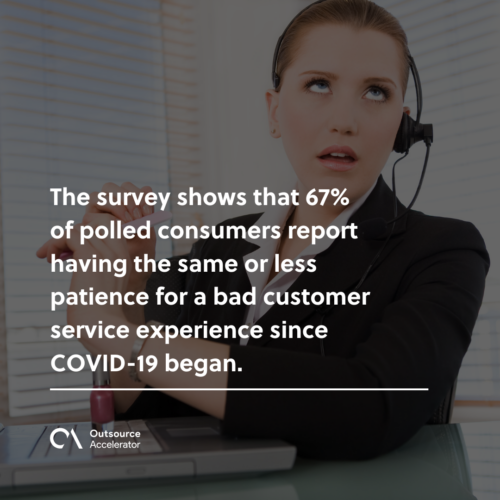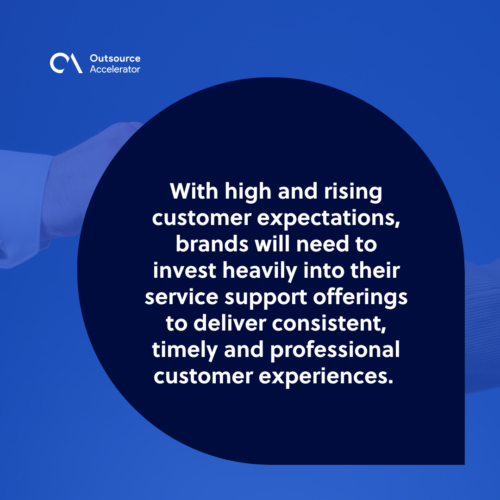OUTspoken: Bright ideas from outsourcing leaders. This article is authored by Clinton Cohen, CEO of iContact for the OUTspoken series.
South Africa’s BPO sector has gained credibility and worldwide recognition for its ability to navigate the COVID-19 pandemic, maintaining business continuity and client service, while safeguarding employee health. This has been achieved under tremendous stress as service teams experienced meteoric increases in customer service support queries amidst the chaos and confusion of the pandemic.
This is according to Clinton Cohen, CEO of iContact, a BPO provider specialising in inbound and outbound sales and customer support services, customer retention and loyalty management, lead generation and back-office fulfilment for international businesses on a 24/7/365 basis.
“Interestingly, while consumers may understand that these are trying times, it has not offered brands much relief in terms of customer expectations according to a report – Customer Service Trends for 2021 – by Stella Connect. The survey shows that 67% of polled consumers report having the same or less patience for a bad customer service experience since COVID-19 began. Customer Service teams face heightened and unrelenting pressure in 2021 as customer service expectations have been radically and permanently altered by the pandemic experience,” says Cohen.
When the pandemic broke in 2020, many organisations were thrown headfirst into online working models, having to stress test their effectiveness and planning, adapting to new technology platforms and circumstances under huge pressure, time and cost constraints. Second waves around the globe mean these pressures remain, but there is the benefit of hindsight and learning to build more resilient business models going into 2021.

“While pandemic risks don’t occur often, when they do the impact and domino effect is severe. COVID-19 provides a model that we should draw upon and drill test to reduce the impact of such events in future, preparing appropriately for the disruptive nature thereof in terms of operations, supply chains, IT systems and the most fundamental aspect of business recovery – customer service,” adds Cohen.
Cohen provides insights on the impact that the pandemic has had on how and when customer service is delivered, and what this means for overall customer experience:
- The pandemic triggered one of the biggest trends that is likely to endure long after COVID-19 is gone – combined remote and in-office working models. While initially challenging in the early stages due to the radically changed operational and connectivity requirements, much refinement has gone into providing the tools and support for hybrid work arrangements that allow companies to pivot in either direction, in line with their unique circumstances and those of the customers they serve. Today’s BPO operations need to prepare for and optimise the hybrid working models that cater for a fluid spectrum of options. While the initial work-from-home movement was a necessity at the time, the hybrid working models of tomorrow are an opportunity to achieve greater innovation and productivity levels by being flexible, digital and responsive to the needs of customers and service team members.
- There have been major shifts in customer expectations driven by the instant gratification that comes with digitisation. Consumers increasingly expect immediate responses so the importance of managing their expectations is vital – whether that contact is through e-mail, Whatsapp, chatbots, AI or a service agent.
- Offering multichannel, AI-driven client service platforms is essential, but not a replacement for a service agent. Chatbots, Whatsapp, live chat/webchat and other self-service platforms have been invaluable in providing scale and resolving simple service queries to reduce volumes, however, they are not an effective replacement for human engagement on complex queries. In fact, 80% of US consumers still prefer to interact with a person when they have a customer service need, according to the Stella Connect Customer Service Trends 2021 report.
- The proliferation of multichannel self-service options also had unintended consequences, with meteoric increases in duplicate customer support logs across multiple service channels. In resolving this challenge, BPO providers will need to be clear about managing customer expectations in terms of response times and deploy sophisticated analytics capabilities to deduplicate multiple logs and avoid wastage of efforts and resources.
- Customers will say goodbye faster in 2021 as their expectations rise exponentially. With high and rising customer expectations, brands will need to invest heavily into their service support offerings to deliver consistent, timely and professional customer experiences. Real-time data and analytics will be crucial in enhancing overall customer satisfaction.
- Timing of service enquiries has shifted – where these were traditionally early in the day as soon as people got to the office and tapered off in the afternoons, remote working has turned this on its head. We now see service enquiries to our call centre starting much later in the day, presumably after people have sorted out family responsibilities, but they are also extending to much later in the evenings when people have time on their hands. This has implications for agent staffing and availability.

“While it’s impossible to predict with certainty what the months ahead will hold, there are certain fundamentals that we must build upon – most notably is that customer service BPO teams will play a fundamental role in helping our clients to recover from the economic and human crisis that has been unleashed by this pandemic.
We need to unpack and build upon the important lessons that continue to emerge in order to build resilient and adaptive business models that can safeguard customer experience, even in its most precarious state. We need to carve out not a ‘new normal,’ but a ‘new better’ where multichannel customer service is at the centre of business and economic recovery,” concludes Cohen.

 Independent
Independent





















